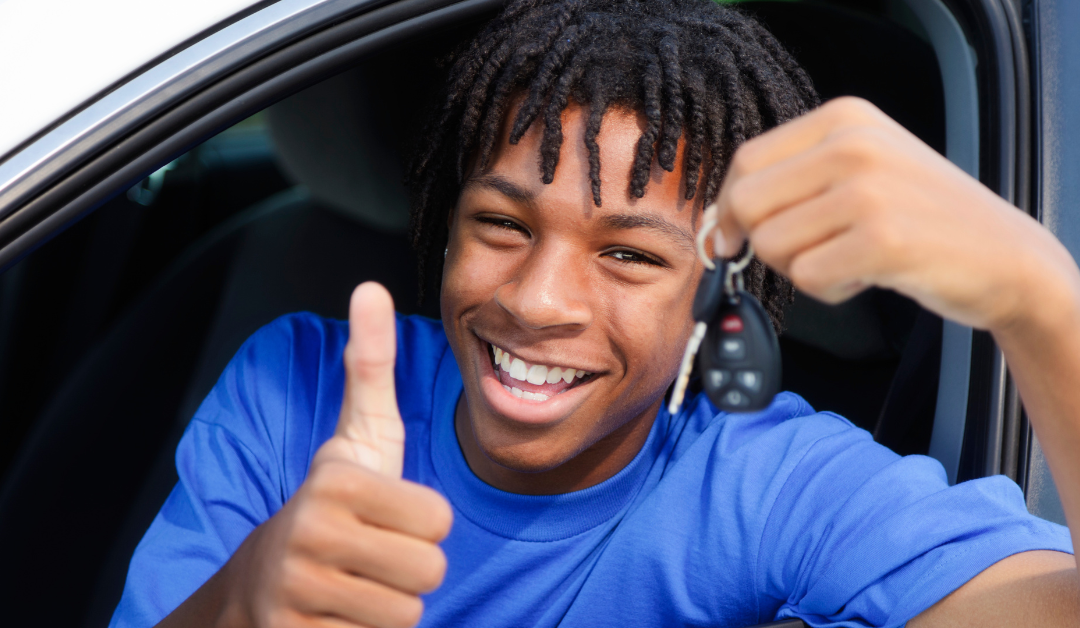Learning to drive in your teenage years can be exciting for young adults. However, teen driving is considered dangerous because they lack the driving experience that helps them make better road decisions. Other significant factors that make teen driving dangerous are overspeeding, tailgating, distracted driving, and intoxicated driving.
How Dangerous Is Teen Driving?
In 2020, the fatal crash rate of teenagers aged 16-19 was three times the rate of individuals aged 20 and above. In addition, seven percent of motor vehicle crash deaths were teenagers. The alarming rise in car accidents and deaths attributed to teens was caused by the following factors:
Lack Of Experience
Obtaining a driver’s license means you have met the practice hour requirement and passed an on-road test. However, despite having road knowledge, you need much driving experience to identify situations where a hazard or accident might happen. It is advised that you spend hours of parent-supervised driving practice in various driving environments to help you gain experience. You may exercise your driving skills in different locations, such as:
- Empty parking lots
- Parking lots with parked vehicles
- Suburban roads
- City streets
- Highways or interstate
Distracted Teen Driving
Distracted driving is one of the leading causes of vehicle collisions involving teens. A study revealed that as teenagers get more driving experience, they tend to be more comfortable on the road. That means that they are more likely to engage in risky behaviors while operating a motor vehicle. These behaviors include:
- Texting or using the phone while driving
- Talking to peers or other passengers
- Eating while driving
The said risky driving behavior falls under the three main types of distractions, namely:
- Visual distraction is when you take your eyes off the road while operating the vehicle, such as when you use your phone while driving.
- Manual distraction means that you take your hands off the wheel. An example would be eating while driving.
- Cognitive distraction happens when you take your mind off driving. For instance, you are talking to your friend on the phone or conversing with a passenger while driving.
Due to distracted driving, there were 186 deaths from car collisions in 2020. With the significantly increasing number of accidents and fatalities attributed to distracted driving, you must know and apply safety precautions on the road to avoid being involved in car crashes.
Teen DUI Driving
Aside from the distractions, driving while intoxicated is also one of the reasons for car accidents involving teens. Did you know that young adults are seventeen times more likely to die in a vehicle collision when drunk driving and have a blood-alcohol level of .08%?
When you are intoxicated while driving, you may experience the following:
- Impaired judgment
- Blurred vision
- Reduced ability to distinguish colors
- Delayed response and reaction time
California law imposes sanctions and penalties for drunk or intoxicated drivers operating their vehicles. Refraining from driving under the influence is essential to ensuring your safety and the safety of other drivers and pedestrians around you.
Overspeeding And Tailgating
Teen driving can be dangerous when drivers overspeed. From 2015 to 2019, there were 15,510 teen-related motor vehicle crashes, and 5,202 were caused by overspeeding. You may follow these steps to help regulate your speed when driving:
- Adjust your speed based on road conditions, such as traffic flow, weather conditions, and unfamiliar locations.
- If you are having difficulty examining these factors, you follow the speed of the other vehicles around you.
- Practice maintaining speed limits by training to control a constant speed when driving.
- Know how the car responds to road environments and changes.
- Practice teen driving in different situations and locations.
Aside from overspeeding, a teen driver tends to tailgate. That is when they are moving close to the car in front of them. When this happens, you are more likely to be involved in a rear-end collision because you do not have ample distance and time to hit your brake. You may follow the tips below to make sure that you are not tailgating:
- Do not cut off other drivers in traffic
- Make sure you are maintaining a distance where you can see the bottom part of the vehicle in front of you.
- Drive at a safe speed.
- Be aware and cautious when driving.
With the factors that make teen driving dangerous, it is essential for you as a new driver to understand, learn, and practice driving precautions and etiquette to avoid being involved in a car accident.
What Is The Graduated Driver Licensing (GDL) Program?
Being a safe and responsible driver takes a lot of knowledge, experience, and practice. This is why California follows Graduated Driver Licensing (GDL) Programs that help young drivers acquire road skills and experience before being awarded full driving privileges. The GDL Program includes:
- The learner stage focuses on supervised driving and driving test reviews.
- The intermediate stage practices unsupervised driving in different high-risk situations
- The full privilege stage is where the driver obtains a standard driving license
| GDL Program Stage | Age Requirement | Training Requirements and Restrictions |
| Learner’s Permit | Minimum of 15 and a half years old |
|
| Provisional License | 16-18 years old |
|
| Full License | At least 18 years of age |
|
Driving on roads and highways is always a dangerous risk. However, you can avoid car accidents with proper knowledge, training, and experience that will help you ensure safety when driving.
What Happens If A Teen Gets Into An Accident?
Being in a vehicle collision due to someone else’s wrongdoings may be confusing and frustrating, especially if you are a new driver. In case you are involved in a car accident, you may follow the steps below to resolve the incident correctly:
- Check if you have injuries
- Move to a safe location nearby if possible
- Call 911 immediately
- Exchange information with the other driver, such as driver’s license and contact details
- Examine the scene and gather physical evidence such as photos of the accident and witness testimony
- Do not accept any monetary settlement from the driver
- File an initial accident report
- Contact a legal expert, if necessary
You may experience challenges when you get into a car accident, especially if the driver at-fault has more knowledge and experience in handling such incidents. Complexities of dealing with a car collision may include:
- Lack of evidence
- Difficulty in proving the party responsible for the accident
- Limited knowledge of car accident claims
- Other driver’s insurance companies pressuring you into taking a reduced settlement offer
If you encounter these challenges, it is highly recommended that you reach out to an accident lawyer to help you sort out your case. They can guide you about the following steps to resolve the issue and claim compensation.
Larry H. Parker Law Office has competent attorneys with decades of experience handling teen driving accident cases. Call our office at 866-311-2457 to schedule a free legal consultation to learn more about your options. We will hear your side of the story, figure out your choices, and provide you with honest legal counsel.




